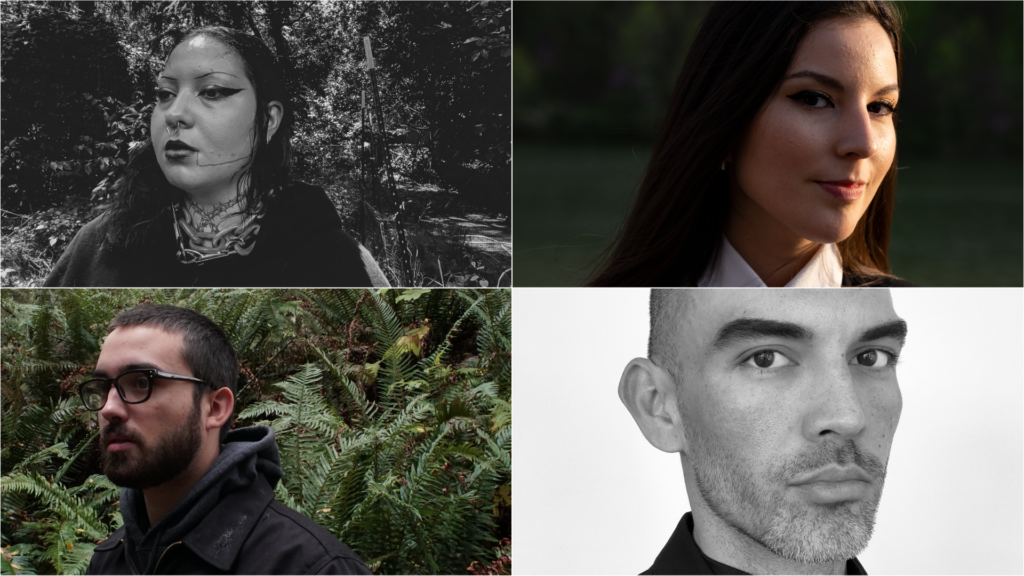By Adam Piron
Adam Piron (Kiowa and Mohawk Tribes) is the Director of Sundance Institute’s Indigenous Program
There’s a history of documentary film and Indigenous communities that’s been, to put it lightly, contentious. This tension lies in the non-fiction field’s roots in salvage ethnography, a now widely critiqued practice of early American anthropology’s compulsions of capturing cultures before their assumed extinction. It was at its most formative in Robert J. Flaherty’s silent film Nanook of the North (1922). Despite its distinction as being the first ever feature-length documentary, the film has since been criticized for its subhumanizing portrayals of the Inuit in comparing them to animals and for its plethora of staged sequences inferring Indigenous people were technologically a century behind how they were currently living. The success of Flaherty’s work and others further cemented American Cinema’s image of Indigenous people as living outside of modernity and opened the door for filmmakers utilizing similar extractive and deliberately misrepresentative practices that have continued a century later.
In spite of this trajectory, Indigenous filmmakers for over fifty years have actively pushed against this legacy and the results have yielded some of the more exciting developments in recent non-fiction. With all of its built-in questioning of objectivity, subjectivity, and the gaze, non-fiction provided a cinematic space that Indigenous artists have utilized to subvert the very form itself and its historical conventions by leaning into their own expressions of culturally-specific storytelling traditions and logic. Filmmakers such as Sky Hopinka (Ho-Chunk Nation/Pechanga Band of Luiseño Indians), Leya Hale (Sisseton Wahpeton Dakota/Diné), Alexandra Lazarowich (Cree), Ciara Lacy (Kanaka Maoli), Fox Maxy (Payómkawichum/Mesa Grande Band of Mission Indians), Jeffrey Palmer (Kiowa), and Adam and Zack Khalil (Sault Ste. Marie Tribe of Chippewa Indians) are just a few of the artists who have created work emblematic of these latest developments; all of whom have also been supported by Sundance Institute’s Indigenous Program.
In recognizing this momentum happening in the documentary space, our program has launched its inaugural Indigenous Non-Fiction Intensive. Its goal is to identify Indigenous artists creating formally bold and personal work and to support them with a grant and mentorship on a current edit of their short-form documentary films. Taking place virtually from July 27-29, it will provide a space for artists to experiment and receive feedback from the participating advisors and peers. The advisors for the inaugural Sundance Institute Non-Fiction Intensive include Colleen Thurston (Choctaw), Maya Daisy Hawke, and Darol Olu Kae. The Indigenous Non-Fiction Intensive builds on Sundance’s commitment to documentary filmmaking through its DFP Fund and Labs.
The following are this year’s selected Fellows and their films:
Sarah Liese with Coming In: Growing up in a colonized world, Sarah always felt unconfident about the intersectionality of her identity. It was not until her journey to meet other two-spirit people and learn more about the history of the concept that she was able to decolonize more of her mind and strive to decolonize other corrupt systems around her.
Sarah Liese (Diné, Turtle Mountain Band of Chippewa Indians) is a master’s student at Ohio University, where she has chosen to study journalism and photography to further her career as a documentary filmmaker. She is a research assistant to Dr. Victoria LaPoe, which has allowed her to learn more about issues prevalent to Native American communities – a topic Liese is passionate about. Her articles, photos, and videos can be found on wlox.com, hottytoddy.com, thedmonline.com, medium.com, and najanewsroom.com. Her poems can be found on indigenousgoddessgang.com.
Sean Connelly with A Justice Advancing Architecture Tour: Illuminating the overlooked history of Hawai‘i history in the United States, the justice-advancing architecture tour begins in Honolulu with an oral history of two prominent buildings: the Hawai‘i State Capitol Building (1960–1969) and the ‘Iolani Palace (1879–1883).
Sean Connelly (Pacific-Islander American) [1984, Honolulu, Hawai’i] is a queer white-passing person-of-color, Pacific-Islander American, local settler grandchild of immigrants raised in an Ilocano/Hawaiian family from Kalihi Valley on the Hawaiian island of O’ahu. Sean collaborates with those willing to sincerely confront the complexities facing Indigenous futures. Sean’s work utilizes spatial dynamics to liberate knowledge and explores issues of material (sky/ground), information (space/flow), space (climate/energy), and time (phantasmic/holographic).
Olivia Camfield and Woodrow Hunt with If You Look Under There You’ll Find It: Explores the traditional and imagined tattooing art forms of the Muscogee Nation, Cherokee Nation and Klamath Tribes. Interviews from other tattooed Indigenous people, landscape footage from research trips, and fictional narrative scenes are used to explore abstract concepts on the experience of being tattooed and tattooing as Indigenous people.
Olivia Camfield (Muscogee Creek Nation) is a multimedia movement artist of the Muscogee Creek Nation, born & raised in the Texas Hill Country. Their works centers Mvskoke Tattooing, Indigenous revenge, and since becoming a farmer, the intersections of these art forms and Missisipian/Southeastern seed keeping/food sovereignty.
Woodrow Hunt (Klamath, Modoc, and Cherokee)’s work focuses on experimental films to explore Indigenous stories and their relationship to genre, themes of the alien, labor, tattooing and landscapes; while utilizing archival materials and documentary practices. His production company Tule Films works within the Indigenous community of Portland, Oregon specifically in education.
The Sundance Institute Indigenous Program is supported by The Andrew W. Mellon Foundation, W.K. Kellogg Foundation, John D. and Catherine T. MacArthur Foundation, Warner Bros. Discovery, Nia Tero Foundation, Indigenous Screen Office, SAGindie, Oneida Indian Nation, New Zealand Film Commission, Jenifer and Jeffrey Westphal, Susan Friedenberg, Susan Shilliday, Indigenous Media Initiatives, Chelsea Winstanley, Exposure Labs, Felix Culpa, Bird Runningwater, Sterlin Harjo, and Sarah Luther.







